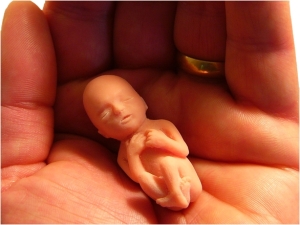Are Young Mothers in India Deprived of Maternal Health Care Services?
 Young women are at a higher risk of poor birth outcomes. Studies have found increased risk of preterm delivery, intrauterine growth retardation and low birth weight among adolescents (Amini et al. 1996; Fraser et al. 1995; Satin et al. 1994). Additionally, the risk of maternal death is higher among teenagers compared to older women (Gupta et al. 2010; Midhet et al. 1998; Neto et al. 2009). According to Reynolds et al. (2006), in South Asia there is a lack of decision-making power due to the effects of gender inequality, which ultimately results in a lower use of health services. They also found a strong correlation between maternal age and the use of maternal and child health care services in Bangladesh, India and Indonesia.
Young women are at a higher risk of poor birth outcomes. Studies have found increased risk of preterm delivery, intrauterine growth retardation and low birth weight among adolescents (Amini et al. 1996; Fraser et al. 1995; Satin et al. 1994). Additionally, the risk of maternal death is higher among teenagers compared to older women (Gupta et al. 2010; Midhet et al. 1998; Neto et al. 2009). According to Reynolds et al. (2006), in South Asia there is a lack of decision-making power due to the effects of gender inequality, which ultimately results in a lower use of health services. They also found a strong correlation between maternal age and the use of maternal and child health care services in Bangladesh, India and Indonesia.
A recent study published in Journal of Health Management entitled “Are Young Mothers in India Deprived of Maternal Health Care Services? A Comparative Study of Urban and Rural Areas” explores the vulnerability of young mothers to poor pregnancy outcomes and their utilization of health care services. The study results clearly establishes that efforts should be made to strengthen the reproductive health programs for adolescent women. Young women may not have enough knowledge on pregnancy, reproductive health issues and adoption of health services for these issues. Mass campaigns to educate women on the symptoms of pregnancy and its complications would help women to use maternal health care services effectively.
The abstract:
This article attempts to study the effect of age of women at birth on the use of maternal health care
services separately for urban and rural areas using data from the National Family Health Survey (NFHS)-3, 2005–2006, India. The indicators of use of maternal health care services used in this study are use of antenatal care services recommended by the World Health Organization (WHO) (includes three or more antenatal check-ups during the first trimester, two or more tetanus toxoid (TT) injections and taking 100 iron and folic acid tablets during pregnancy), place of delivery, assistance at delivery and use of postnatal care services. At first, the percentage of births that utilized various maternal health care services are discussed separately for urban and rural areas, followed by difference in utilization of maternal health care services between adolescent and adult mothers. Finally, logistic and multinomial regressions are used to examine the influence of age of women at birth on the use of maternal health care services for controlling for other factors. Multivariate results revealed that women who gave birth during adolescence are less likely to use antenatal, natal and postnatal care services in both urban and rural areas. Therefore, efforts should be made to educate parents and other family members on the consequences of early marriage and early pregnancy and also the importance of delaying marriage.
Click here to read “Are Young Mothers in India Deprived of Maternal Health Care Services? A Comparative Study of Urban and Rural Areas” for free from Journal of Health Management!
Make sure to sign up for e-alerts and be notified of all the latest research from Journal of Health Management!





















































































